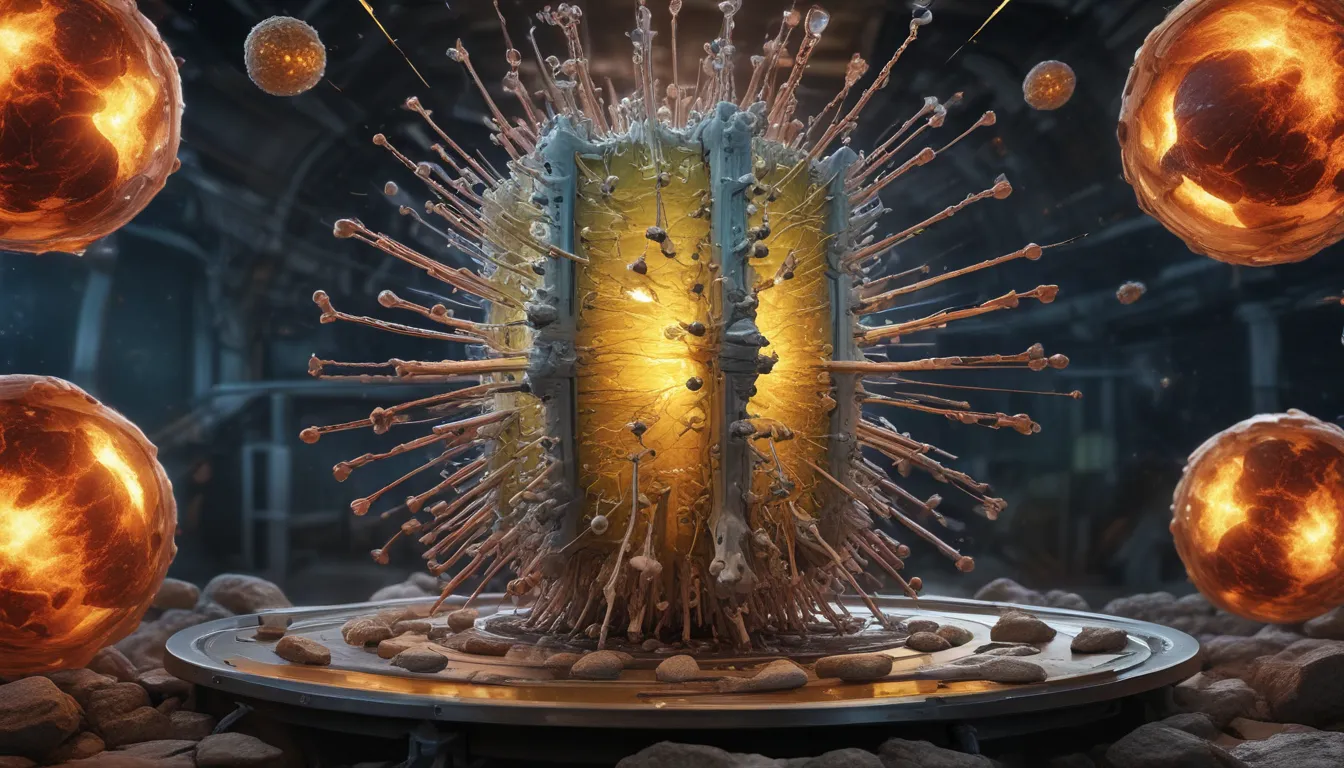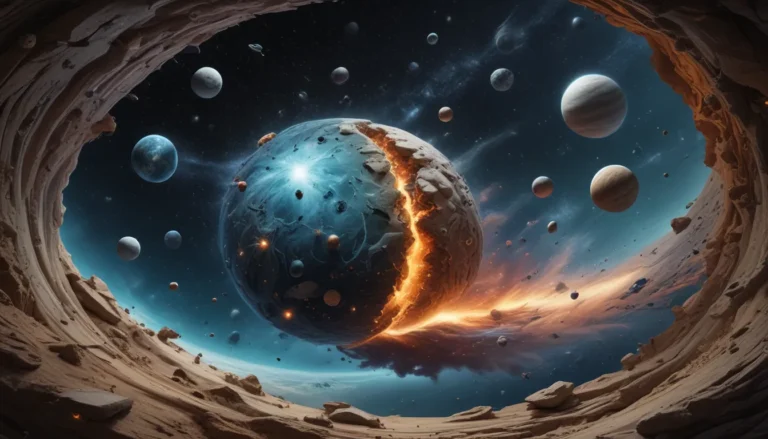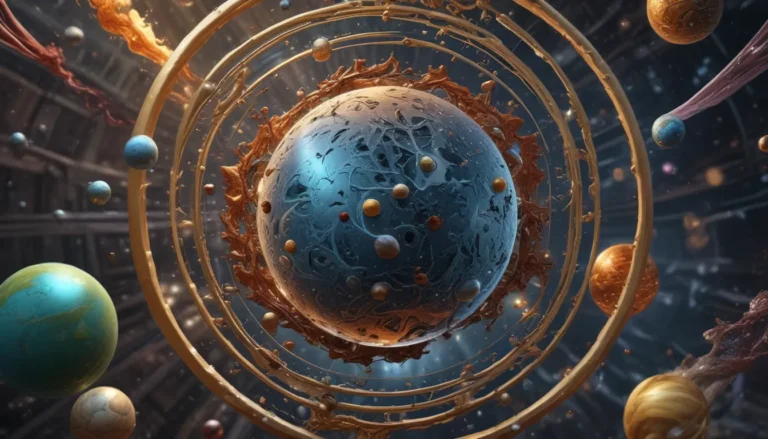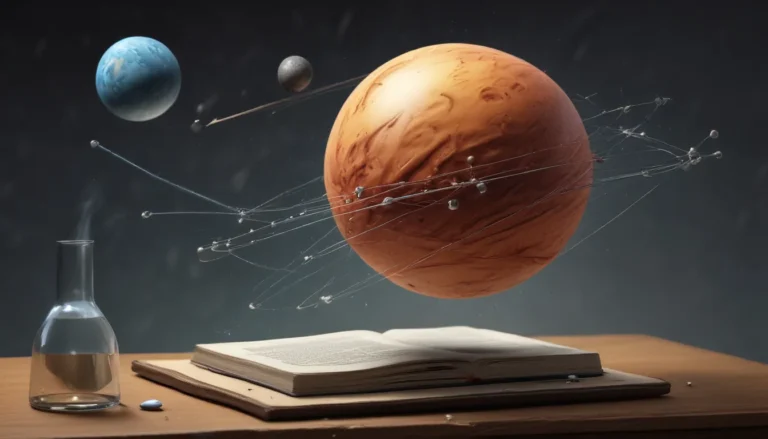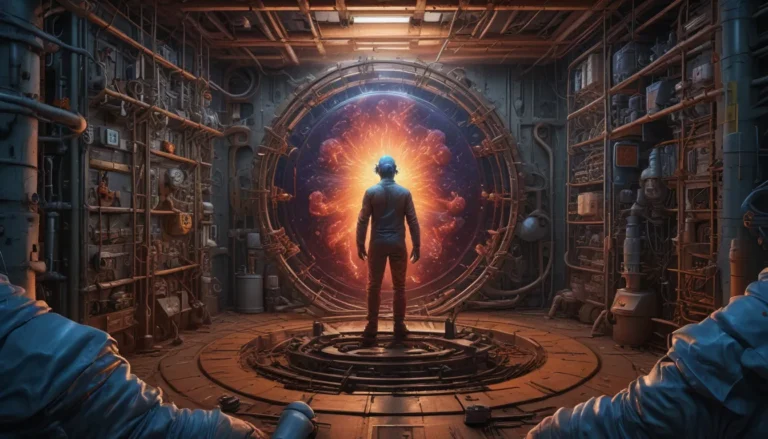A Note About Images: The images used in our articles are for illustration purposes only and may not exactly match the content. They are meant to engage readers, but the text should be relied upon for accurate information.
Fission, a mesmerizing phenomenon in the realm of physics, has reshaped our comprehension of atomic structure and energy production. With its roots in the early 20th century, the discovery of fission by Otto Hahn and Fritz Strassmann sparked a revolution in nuclear science and technology. Let’s embark on a journey to uncover 14 astounding facts about fission that will deepen your understanding and admiration for this extraordinary scientific process.
The Essence of Fission: Unveiling Its Power
- Fission is the remarkable occurrence when an atom’s nucleus splits into two smaller nuclei, unleashing a vast amount of energy in the process.
- This powerful splitting of atoms is not only the backbone of electricity generation but also finds applications in medical treatments, albeit with challenges posed by radioactive waste and potential radiation harm.
Origin Story: The Dawn of Fission
- In the year 1938, the pioneering work of Otto Hahn and Fritz Strassmann unveiled the splitting of uranium atoms, marking the advent of fission.
- This groundbreaking discovery acted as a catalyst for monumental advancements in energy production and atomic science, setting the stage for a continuous debate on its dual nature of good and harm.
Fission Powering the World: A Driving Force
- Nuclear power plants rely on fission reactions to harness energy, catering to a significant portion of the global energy demands.
- The intense energy released through fission paves the way for a sustainable and efficient mode of electricity generation, shaping the course of our technological landscape.
The Duality of Fission: Spontaneity vs. Induction
- Fission can manifest spontaneously, as seen in radioactive decay, or be induced by bombarding atoms with particles like neutrons.
- This versatile process of fission opens doors to numerous applications, ranging from energy production to industrial practices such as sterilization and cancer treatment through radiation therapy.
Unveiling The Potential: Fission’s Marvels
- The energy yielded during fission surpasses that of chemical reactions by millions of times, underscoring its immense power and efficiency.
- Apart from energy generation, fission holds the capacity to birth new elements through the splitting of atoms, ushering in a realm of scientific possibilities.
The Dark Side of Fission: Its Devastating Impact
- The catastrophic potential of fission aligns with its role in the creation of nuclear weapons, exemplified by the harrowing events at Hiroshima and Nagasaki during World War II.
- By unleashing the chain reaction of nuclear fission, these weapons exhibited the disastrous consequences of this remarkable yet perilous phenomenon.
A Balancing Act: Controlling Fission for Good
- In the realm of nuclear reactors, fission is meticulously controlled to sustain chain reactions and generate heat without triggering destructive explosions.
- This careful management of fission reactions exemplifies the fine line between harnessing its power for beneficial applications and averting potential dangers.
The Enigma of Fission: Unveiling Its Mysteries
- Delving into the realm of fission unravels the intricate workings of atomic structure, shedding light on the behavior of subatomic particles and the fundamental forces governing the universe.
- The profound insights gained through studying fission herald a new era of scientific exploration and technological innovation, propelling us towards a deeper understanding of the cosmos.
Embracing the Future: Fission’s Evolution
- Scientists are fervently delving into advanced forms of fission, such as nuclear fusion, in a bid to unveil sustainable and environmentally friendly energy solutions for the future.
- The ongoing research in the realm of fission not only promises cleaner energy alternatives but also underscores the ever-evolving nature of this remarkable scientific phenomenon.
In Conclusion
In conclusion, the realm of fission stands as a testament to the intersection of scientific prowess and technological innovation. From its humble origins to its far-reaching implications, fission continues to shape our world in profound ways, offering a glimpse into the intricate tapestry of atomic science and energy generation. As we gaze into the horizon of scientific progress, the boundless potential of fission to redefine our energy landscape beckons, promising a future brimming with possibilities.
FAQs: Unraveling Fission’s Mysteries
-
What is nuclear fission?
Nuclear fission entails the splitting of an atom’s nucleus into smaller nuclei, liberating a substantial amount of energy in the process. -
How was fission discovered?
Fission’s discovery in 1938 can be credited to the groundbreaking experiments conducted by Otto Hahn and Fritz Strassmann. -
What is the significance of fission in nuclear power plants?
Fission serves as the cornerstone of nuclear power plants, generating heat that propels turbines to produce electricity. -
Can fission be used in nuclear weapons?
Yes, fission plays a pivotal role in the creation of nuclear weapons by initiating uncontrolled chain reactions that culminate in explosive energy release. -
Are there different types of fission?
Indeed, fission manifests in two main forms: spontaneous fission occurring naturally and induced fission triggered by bombarding nuclei with neutrons. -
What are fusion-fission hybrid reactors?
Fusion-fission hybrid reactors amalgamate nuclear fusion and fission processes, presenting a potential avenue for sustainable energy generation. -
Is fission a safe energy source?
While fission offers a potent energy source, concerns persist regarding nuclear waste disposal and the risk of accidents or meltdowns. -
What are scientists researching in the field of fission?
Ongoing research aims to enhance fission’s safety, efficiency, and sustainability through innovative reactor designs and fuel technologies. -
Can fission pave the way for a carbon-free energy future?
Fission holds the promise of contributing to a carbon-neutral energy future by minimizing greenhouse gas emissions compared to traditional power sources. -
How does fission deepen our understanding of the universe?
Exploring fission unveils the fundamental particles and forces governing the cosmos, offering profound insights into the building blocks of matter and the cosmic processes shaping our universe.
In essence, the wondrous world of fission beckons with its myriad mysteries and scientific marvels, urging us to delve deeper into its realms of discovery and innovation. As we navigate the intricate tapestry of atomic science and energy generation, the allure of fission shines brightly, illuminating a path towards a future teeming with endless possibilities and scientific breakthroughs.
